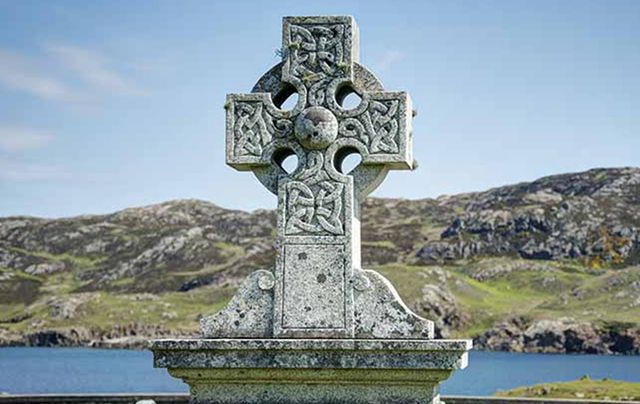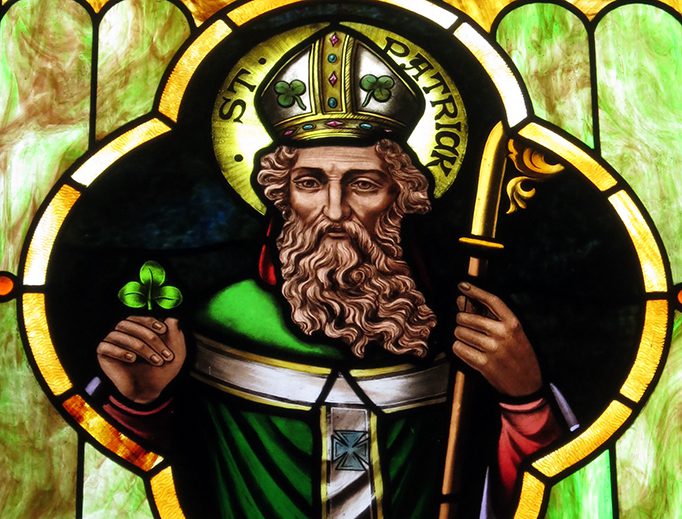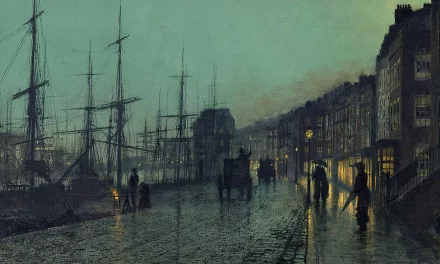Estimated reading time: 6 minutes
By Michael Vecchio
Every year on March 17th, much of the western world celebrates “being Irish” by wearing the colour green, drinking beer, and decorating with the symbols of leprechauns and clovers; and it is all done “in the name” of Saint Patrick, the patron saint of Ireland who has captivated imaginations for centuries.
But like many figures of antiquity, the truth behind the figure who would become a Saint, has long been obscured by both a lack of reliable information and mythology. So just who was Saint Patrick, and how did a Roman era cleric who was not even Irish end up inspiring one of the most popular of feast days?
Born in Roman controlled Britain around the year 385 AD, the young man later known as Patrick was given the birth name of Maewyn Succat, a moniker of Welsh origin, he was raised in a family of considerable wealth for the time. Ironically as a youth and adolescent Succat was not considered religious and could in fact even have been labelled as pagan.
Around the age of 16 however everything would be violently uprooted; Succat’s comfortable lifestyle was forever altered when a group of Irish raiders sacked his family estate. Forcibly taken prisoner, he was transported to Ireland and held in captivity. As with many episodes about his life, precise details about events are difficult to completely verify, and the exact location of his detention is not certain; among the possible locales include Mount Slemish (present day Northern Ireland) and County Mayo.
Throughout his captivity Succat labored as a farmer and shepherd, frequently trying to execute an escape. It was in the prolonged periods of abuse and solitude that the young man turned to religion for solace, eventually becoming a devout Christian. During this period of self conversion, he developed the desire to spread the faith even to his captors, thus beginning a life mission for which he would be known.
After six years as a prisoner, Succat finally escaped, allegedly walking 300 kilometres to the Irish coast, before sneaking onto a boat headed back to Britain. By this time he had already bestowed himself the name Patrick; derived from the Latin Patricius, meaning “one who is noble”, the new man would have been unrecognizable to his relatives back home. His transformation was not only physical, but spiritual and soon he began reporting visions and other miraculous revelations.
In his own autobiographical work Confessio, Patrick details how angels appeared to him in dreams imploring him to begin missionary work; after religious training (the exact seminary or monastery is not known) that lasted up to 15 years, Patrick was ordained to the priesthood and eventually rose up the ranks to become a Bishop.
Contrary to popular legend however, Patrick did not choose to return to Ireland, but was rather sent there to continue to evangelize; the notion that he introduced Christianity to the country is thus also not accurate, for while he was instrumental in spreading the faith, it had arrived on its shores through other clerics. Nevertheless Patrick’s arrival back to the land in which he had spent years of captivity would cement his place in world history.
Based on his knowledge of the Irish language and culture (arisen from a combination of his studies and time as a prisoner) Patrick’s methods to preach and convert aimed to have the Irish people come to the faith naturally, rather than forcing it upon them. He became famous for interpreting Irish customs and beliefs to fit the Christian narrative; amongst examples of his work include the use of bonfires to celebrate Easter (based on Irish traditions of burning offerings to their Gods) and the creation of the Celtic Cross, featuring a superimposed sun, which was an important symbol of veneration for the druids.

But of course perhaps the best-known example of his missionary work was his use of the clover leaf to metaphorically represent the concept of the Holy Trinity, or “three in one”. These simple yet effective methods proved to be successful and the Christian faith flourished throughout the British Isles, as the Roman Empire would too turn to Christianity after the conversion of Constantine the Great.
When Patrick died on March 17, circa 461 AD, his reputation as a great prophet had been established; in the years and centuries to follow legends and myths began aggrandizing his accomplishments while unfortunately further obscuring facts.
Stories of his driving the snakes out of Ireland and into the sea, praying for food for the poor and having a herd of swine miraculously appear, or raising a group of 33 men back from the dead, gripped listeners for centuries. To this day because of the prevalence of these tales, Saint Patrick is believed by some to be a myth himself, and not an actual person.
Although these narratives served to honor him, they inadvertently created a caricature that has made it difficult to know with certainty many aspects of his life and work. What is certain however, is that as a missionary Patrick was an accomplished orator and theologian who brought the burgeoning Christian faith increased prominence.
Despite not being officially canonized as a Saint by the Catholic Church, (rather he was popularly acclaimed as one) the image of Saint Patrick has endured in the minds of many. While his feast day was initially only a local observance in Ireland, the diaspora of Irish immigrants to North America led to an increase of foreign customs taking root in new lands.

Eager to commemorate their homeland and traditions, celebrations of Saint Patrick’s Day grew strongly throughout the late 19th century and into the 20th. Quickly it evolved from a day to celebrate Saint Patrick the man, to a day to celebrate Irish identity in the face of constant xenophobia.
Though the religious background has largely been diminished and the holiday is now mostly a secular affair, Saint Patrick’s Day has become a significant cultural event for the Irish and non-Irish alike. Whether or not one can ever know the full details of Patrick’s life with precision with all the surrounding mythology, his story of perseverance, ambition, and deep faith, have defined Ireland and rightfully served as a reason to celebrate its people and customs.
Articles you may also like

Blood and Pepper: The Aceh Wars
The history of the Dutch East Indies is a blood-soaked tale of war and subjugation in the name of national honour, though in the background it was lucrative spice trade that was the real motivator. In this article, we’ll lift out one particular aspect of this 350-year-long saga, and talk about the Aceh war, one […]

Battle of 42nd Street – Anzacs Proving Germany Could be Beaten
Morale can make all the difference on the battlefield. On the 27th May 1941, with the Greek island of Crete close to loss and the Allies in full retreat, a 12 minute moment of madness by Australian and New Zealand troops proved that aggression and bravery could overcome Germany’s elite troops. By Richard Shrubb. Background […]






